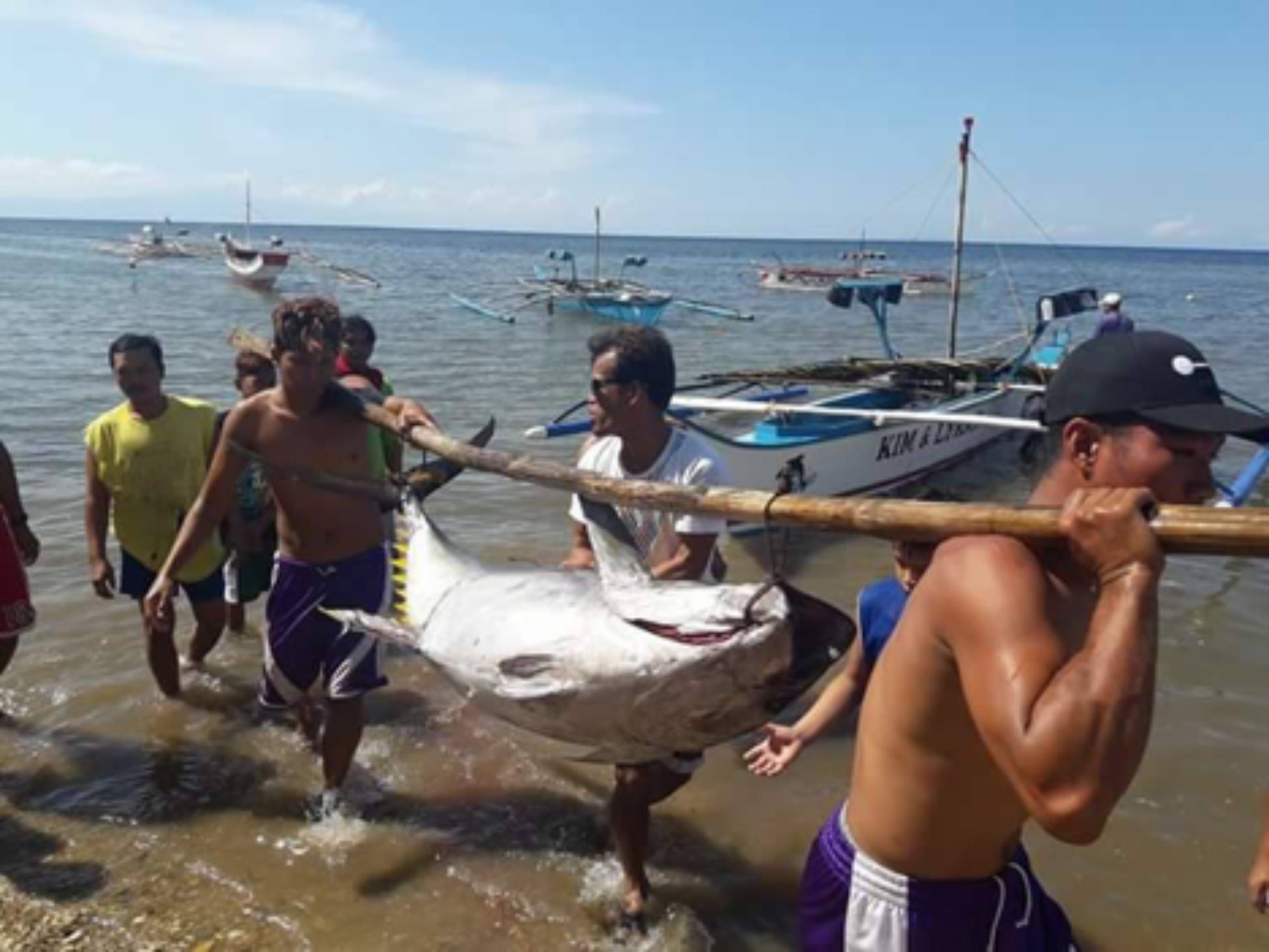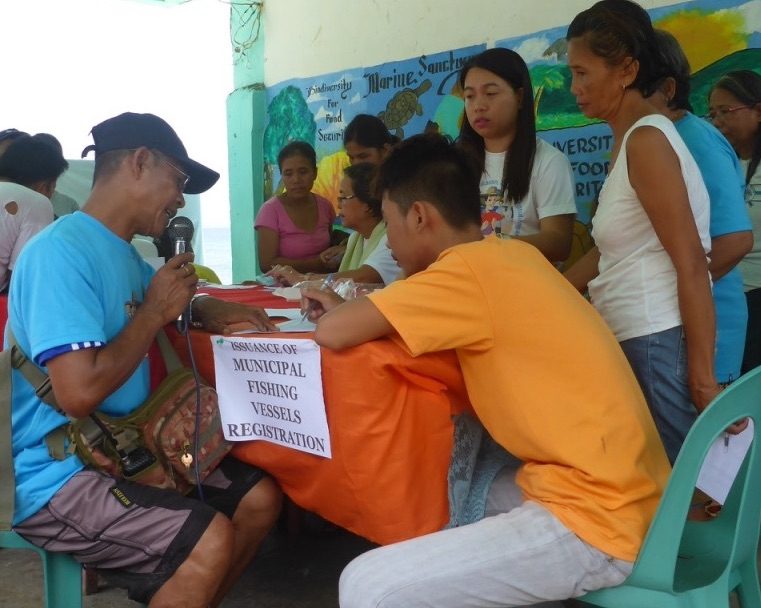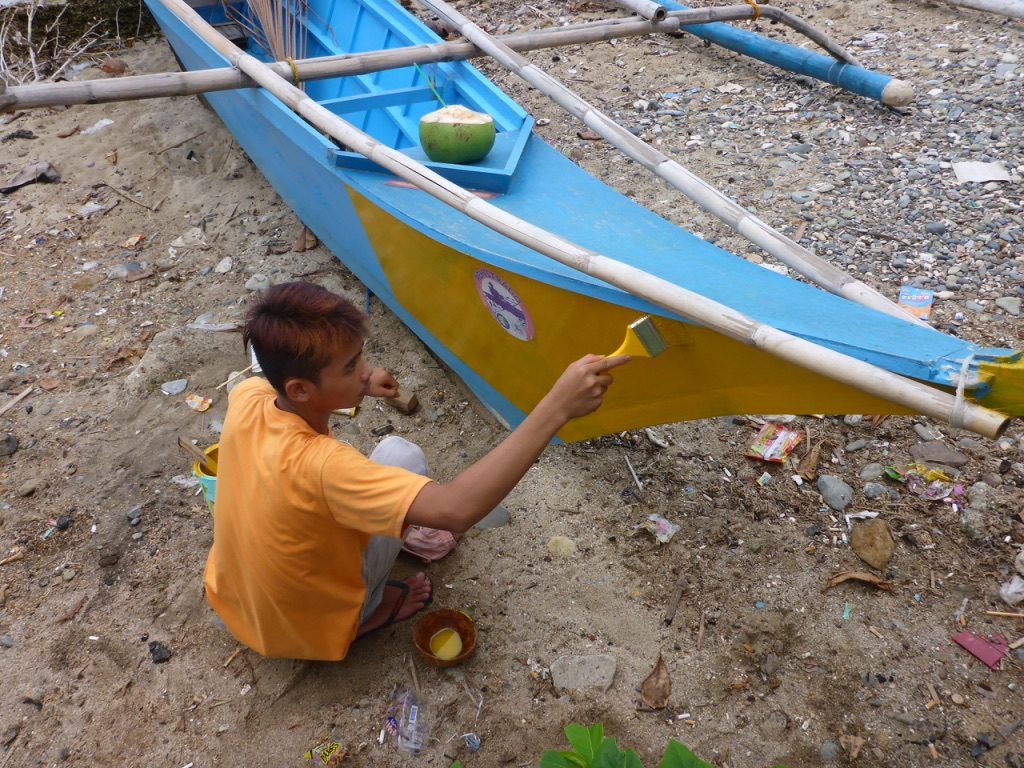SUMMARY
This is AI generated summarization, which may have errors. For context, always refer to the full article.

ANTIQUE, Philippines – Roaring along the scenic coastal highway of Libertad, in the northern tip of Antique, the tricycle was groaning with the weight of its load. Instead of passengers, however, two freshly caught yellowfin tuna stared out the back of the vehicle, to the amusement of guests in a passing van.
Libertad is one of the 4 towns along Pandan Bay, where the open seas are known as the “tuna highway” of Antique for their bountiful stocks of the commercially valuable fish. It’s less than an hour from Caticlan, the gateway to Boracay, past winding roads and dreamy mountain villages. Yet, the party island might as well be worlds away. The sleepy fifth-class municipality only comes alive when fishers haul in a huge catch of tuna, or when there’s a fiesta somewhere.
Lining up for identification cards would hardly be cause for celebration elsewhere, especially in large cities where the queues bring misery to most urbanites. Here in Barangay Tinigbas, however, it was enough reason for the crowds to come out on a rainy day in May.
“They were all excited, they were all very happy, the 1,800 fishers who registered kasi mga fishers natin, wala silang ID (because our fishers, they don’t have IDs),” said Libertad Mayor Mary Jean Te. Her signature makes the fisher’s ID a valid government identification card that can be used in transactions such as sending and receiving remittances, the lifeline of many remote towns.
In the past, most of the coastal villagers only had a cedula – or residence certificate – to confirm their identity. The new fisher’s ID, which has a unique QR code registered with the Bureau of Fisheries and Aquatic Resources (BFAR) and digitized photo, was not only a novelty item but a treasured possession. “It shows na professional fisherfolk talaga sila (that they are really professional fisherfolk). Even the wives, the children also wanted an ID,” Te says.

On hand to add a festive air in Tinigbas, one of the 14 fishing villages in Libertad, were the town’s fish mascots – Tomsie for tuna and his partner Mamsie for mamsa or jacks. These are some of the most plentiful species in Libertad, where small-scale fishing is the main source of livelihood for most families.
Exclusive rights for small fishers
Tuna fisher Louie Salido has been plying these waters for many years. He uses hook and line to reel in the fish from payao, or fish aggregating devices made of palm fronds where the tuna feed on squid and other prey. “There are times when the fish are smaller and more plentiful. But there are also times, like in June and July, when the fish are bigger – 40 kilos, 60 kilos – so if you just get one per day, for 3 successive days, that’s enough even if you don’t go fishing for a month,” he says. “Once, in just 4 days of fishing I earned P18,000!”
The fishing grounds for tuna are within the 15-kilometer boundary and are considered the most productive area inside municipal waters, which are supposed to be reserved for small-scale fishers using outrigger motorboats weighing a maximum of 3 tons. But with the demand for tuna at a premium, competition is fierce from commercial fishers with bigger boats that regularly raid the municipal waters inside Pandan Bay.
“When I became the chairman of the MFARMC (Municipal Fisheries and Aquatic Resources Management Council), I immediately thought that we need to have a law, an ordinance,” says Salido. Local legislation would ensure that small-scale tuna fishers like him would get exclusive rights to the bounty in their waters.
In 2014, the municipality of Libertad became one of the local partners of the international conservation organization Rare, which is promoting sustainable fisheries in the Philippines through a program called Fish Forever. The initiative combines social marketing and marine governance strategies to come up with local ordinances and long-term management plans.
“With the entry of Rare, we were able to declare a managed access area where our fish shelters, where our fishers get tuna,” says Te. “The area is located in the Sulu-Sulawesi region, a haven for tuna and tuna-like species. One tuna can weigh around 130 kilos,” she says.
The municipality designated agricultural technologist Joy Surilla as its conservation fellow who would work with Rare staff. For 3 years, they held a series of consultations and town meetings, with the goal of crafting a practical fisheries policy that answers the needs of local constituents.
The biggest hurdle was the question of payao access. Because they have the funds, commercial fishers owned most of the payao within Libertad’s municipal waters, sometimes using local fishers as dummies. In April this year, the municipality finally passed the managed access ordinance, limiting payao ownership to registered fishers and their boats through a permit from the local government.
To minimize the influence from commercial fishers, the municipal government is starting to make their own payao for the exclusive use of local fishers. In return, the fishers have to maintain the fish aggregating devices and report their daily catch for monitoring purposes. They are also restricted to hook and line fishing gear to catch tuna, to prevent overfishing or catching of juveniles; in this way, they help maintain a healthy population of the much sought-after species.
Managing the fisheries resources means regulating the number of users, making boat and fisher registration an essential part of the process. Libertad’s fisheries staff listed down legitimate fishers and distributed identification cards. Their boats were painted yellow at the prow and stern to distinguish them from outside vessels, part of a color-coding scheme initiated by BFAR to resolve territorial conflicts.

Along their 18-kilometer coastline, the local government is also reviving the marine sanctuaries that had been neglected, together with fishers’ organizations that volunteer to put personnel in guardhouses and deter illegal activities. Protection of the nearshore sanctuaries complements the designation of exclusive tuna fishing areas in deeper waters, to ensure that local fishers can sustain fish stocks in both marine environments.
Selling tuna in Boracay
The new policy is good news for fishers like Salido, who is looking forward to getting more fish within Libertad’s municipal waters. “There are more fishers now. Before, in one payao there were only 3 to 4 pumpboats so there’s a better chance of getting fish. Now there is less fish and you still have to compete with commercial fishers, so it’s not sufficient,” he says.
“If everything that we have started will be implemented properly, I think there’s a future in fishing,” adds Salido. “I’ve been telling the other fishers, if there’s fish in the payao that doesn’t take the bait and you don’t catch anything, maybe it will take the bait when you come back the following day. That’s better than commercial fishing, because they catch too many fish and there’s nothing to get when you return to the payao.”
He is hoping that the fisheries council can establish up to a dozen payao for the hook-and-line fishers of Libertad. A month after the ordinance was passed, he says, “We are slowly, gradually feeling the impact of the ban but it’s not yet that significant. Sometimes, there are still commercial fishers or those from other municipalities who steal our fish.”
Te is looking for funds to build cold storage facilities, so that Libertad’s fishers can earn more from their catch. She says traders buy tuna from the fishers at P100 per kilo, and sell the fish at double the price in Kalibo and Boracay.
She echoes Salido’s worries, saying “the monitoring should be intensive against illegal activities because there is still encroachment. There are still big fishing vessels that come into the area from other provinces.”
With a managed access ordinance in place, Libertad is relying on the cooperation of its fishers in enforcing the law and making sure they assert their rights to the bounty of Antique’s “tuna highway.” – Rappler.com
The author is the senior communications manager of Rare in the Philippines. For more information, visit www.rare.org/philippines.
Add a comment
How does this make you feel?
There are no comments yet. Add your comment to start the conversation.